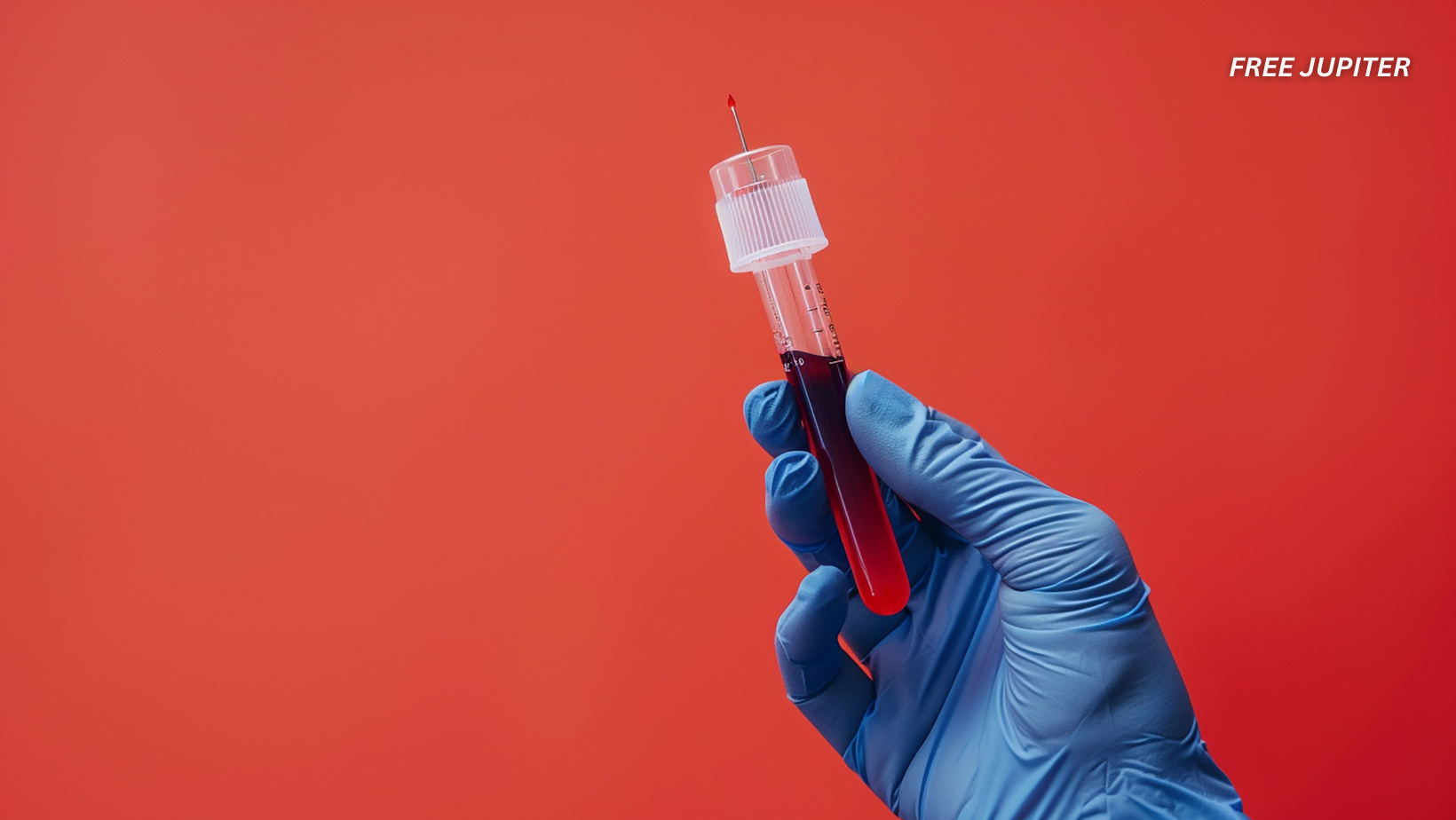Imagine walking into a clinic for a routine blood test and walking out with the knowledge that, years from now, you might develop cancer — long before any symptoms appear.
It may sound like something out of science fiction, but thanks to recent breakthroughs by researchers at Johns Hopkins University, this scenario could soon be reality.
In a groundbreaking study published in Cancer Discovery, scientists unveiled a blood test capable of detecting cancer up to three years before it would typically be diagnosed using current methods.
This leap forward could completely reshape how we approach one of the deadliest diseases in the world — moving from reaction to prevention.
How Cancer Leaves Clues in the Blood
All cells, including cancerous ones, shed tiny fragments of DNA into the bloodstream. These fragments are known as circulating tumor DNA (ctDNA). While healthy cells also release DNA, tumor DNA carries specific mutations or markers that hint something is wrong.
The Johns Hopkins researchers leveraged this biological breadcrumb trail using advanced genetic sequencing technologies. They analyzed 52 blood samples that had originally been collected for cardiovascular studies — 26 from individuals later diagnosed with cancer and 26 from individuals who remained cancer-free.
The test they used, called a Multicancer Early Detection (MCED) test, successfully flagged signs of cancer in 8 of the 26 samples from people who would eventually receive a diagnosis. Four of those eight showed strong genetic indicators linked directly to tumor activity.
Why Detecting Cancer Sooner Matters
Early detection is widely considered one of the best tools in fighting cancer. Most treatments are more effective and less aggressive when a tumor is still small and hasn’t spread.
When cancer is caught in its early stages, survival rates dramatically improve. According to the American Cancer Society, the five-year survival rate for localized breast cancer is around 99%, but it drops sharply when the cancer has spread.
Lead researcher Dr. Yuxuan Wang put it plainly: “Three years earlier provides time for intervention. The tumors are likely to be much less advanced and more likely to be curable.”
Think of it like finding a match before it becomes a wildfire.
Read more: How Dirty Are Beards, Really? Science Provides An Answer
Not Without Questions: The Hurdles Ahead
Even though the test shows great promise, scientists are quick to point out that we’re still in the early days. Dr. Nickolas Papadopoulos, another senior member of the team, emphasized the need to figure out what happens after a positive test.
What kind of follow-up care is appropriate when no visible tumor has been found? Would people undergo unnecessary biopsies or scans?
Then there’s the issue of accuracy. Early cancer detection tests must walk a tightrope between false positives, which could cause panic and unnecessary procedures, and false negatives, which could miss early cancers entirely.
The World Health Organization’s epidemiologist Dr. Hilary Robbins weighed in with a cautionary note. “Screening interventions that are done on very broad swaths of the population — most of whom will not benefit — should be very well characterized,” she said. “And their benefits should be proven before they’re rolled out.”
The Bigger Picture: Could This Replace Traditional Screening?
The idea of a one-size-fits-all blood test for cancer is tantalizing. Traditionally, different cancers require different screening tools — mammograms for breast cancer, colonoscopies for colorectal cancer, and so on. But MCED tests aim to consolidate detection into one minimally invasive, routine procedure.
Companies like Grail (backed by tech giant Illumina) are already exploring similar tests that can screen for over 50 types of cancer using a single blood sample. These emerging technologies are part of a growing field known as liquid biopsy, which offers an alternative to traditional tissue biopsies by identifying tumors through blood, saliva, or other bodily fluids.
If widely adopted and refined, liquid biopsies could reduce the need for more invasive and uncomfortable diagnostic procedures — and more importantly, they could catch cancer when it’s most treatable.
What Comes Next?
The Johns Hopkins team hopes to expand their studies, using larger and more diverse groups of participants. Right now, the sample size of 52 is promising but not enough to change clinical practice. They also need to answer critical questions, like:
- Which cancers are easiest (or hardest) to detect using this method?
- How often would people need to take the test?
- Could this become part of a yearly physical exam?
Regulatory bodies like the U.S. Food and Drug Administration (FDA) will also play a key role. Before such tests become available to the general public, they must be rigorously tested, validated, and approved — a process that could take years.
Read more: Bats Don’t Get Cancer—Here’s What Scientists Think It Means For Humans
Hope On The Horizon
Despite the many hurdles, one thing is clear: we are entering a new era in cancer diagnostics. The ability to find cancer years before symptoms appear could shift our entire healthcare system from one focused on late-stage treatment to one rooted in early intervention and prevention.
Dr. Bert Vogelstein, another key figure in the study, put it best: “This study shows the promise of MCED tests in detecting cancers very early, and sets the benchmark sensitivities required for their success.”
In the near future, your annual check-up might not just tell you about your cholesterol or vitamin levels. It could quietly be scanning for the earliest whispers of disease — giving you a fighting chance long before cancer has a voice.
The Promise: Catching Cancer in the Bloodstream
The Johns Hopkins team analyzed stored blood plasma samples originally collected for cardiovascular research. Out of 26 participants who eventually developed cancer, their Multicancer Early Detection (MCED) test correctly identified 8 cases showing early signs — and 4 of those had tumor-linked genetic mutations long before symptoms surfaced.
Dr. Yuxuan Wang, lead researcher, emphasized the importance of this head start:
“Three years earlier provides time for intervention. The tumors are likely to be much less advanced and more likely to be curable.”
The idea is compelling: instead of waiting for cancer to manifest through symptoms or imaging, why not detect it at the molecular level while it’s still quietly forming?
The Bigger Picture: Supporting Research and Developments
This study isn’t the only one exploring the blood’s potential to whisper early warnings of cancer. Several other researchers and organizations have taken steps toward the same goal — with enthusiasm, but also with caution.
🧪 Grail’s Galleri Test: A Commercial Leap into Liquid Biopsy
Perhaps the most publicized example of MCED in action is the Galleri test developed by California-based biotech firm Grail. Backed by Illumina, it claims to detect more than 50 types of cancer with a single blood draw.
The test searches for methylation patterns — chemical changes on DNA that hint at the presence of cancer cells.
But real-world results vary. For instance, while Galleri shows high accuracy in detecting late-stage cancers, its sensitivity drops for early-stage tumors — precisely where the most lives could be saved.
As The New Yorker reported in a June 2025 article titled “The Catch in Catching Cancer Early,” some oncologists remain concerned that tests like Galleri could lead to overdiagnosis and unnecessary procedures.
They warn about lead-time bias — the illusion of improved survival simply because the disease was found earlier, not because the outcome improved.
The Science: How Does It Work?
MCED and liquid biopsy technologies work by identifying circulating tumor DNA (ctDNA) — fragments of DNA that cancer cells shed into the bloodstream. This genetic debris can be picked up using high-throughput sequencing, a process that scans blood for telltale mutations or epigenetic changes.
Johns Hopkins’ study shows that these tests don’t just catch known cancers — they may uncover signs of tumors still too small for imaging or physical symptoms. That’s the equivalent of spotting smoke before there’s even a fire.
Challenges Ahead: What Happens After a Positive Test?
Even if a blood test flags early signs of cancer, doctors may still be left with a puzzle:
- Where is the tumor?
- Is it aggressive or slow-growing?
- Should we treat it now or wait?
Dr. Nickolas Papadopoulos, one of the senior authors of the Johns Hopkins study, admitted that the next hurdle is determining how to act on these early warnings. Current cancer treatment protocols are built around detection at later stages. Medicine may need to evolve in parallel with diagnostics.
Read more: If You’re in One of These Groups, You Probably Need More Magnesium
A Future in Sight: Routine Cancer Screening by Blood?
The dream of a routine annual blood test that scans for dozens of cancers may not be far off. While today, most people undergo cancer screening only for select diseases (like breast, colon, or cervical cancer), MCED technology could change that. A future where cancer screening is as easy as a cholesterol check is now within reach.
Johns Hopkins’ Dr. Bert Vogelstein, a pioneer in cancer genomics, remains optimistic:
“This study shows the promise of MCED tests in detecting cancers very early, and sets the benchmark sensitivities required for their success.”
Still, both he and his colleagues acknowledge that larger trials, diverse patient pools, and real-world application studies will be needed to prove the test’s full potential.










